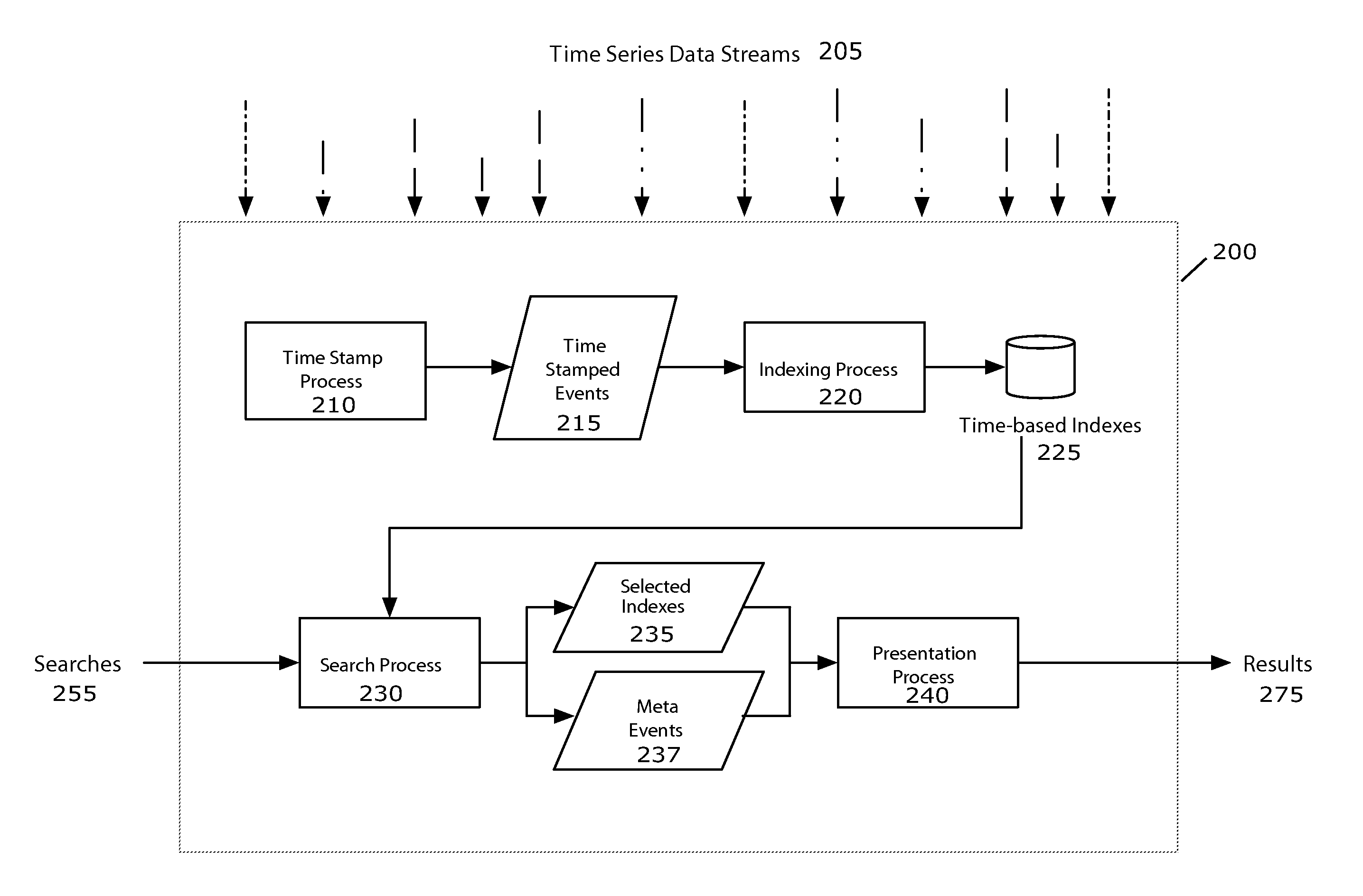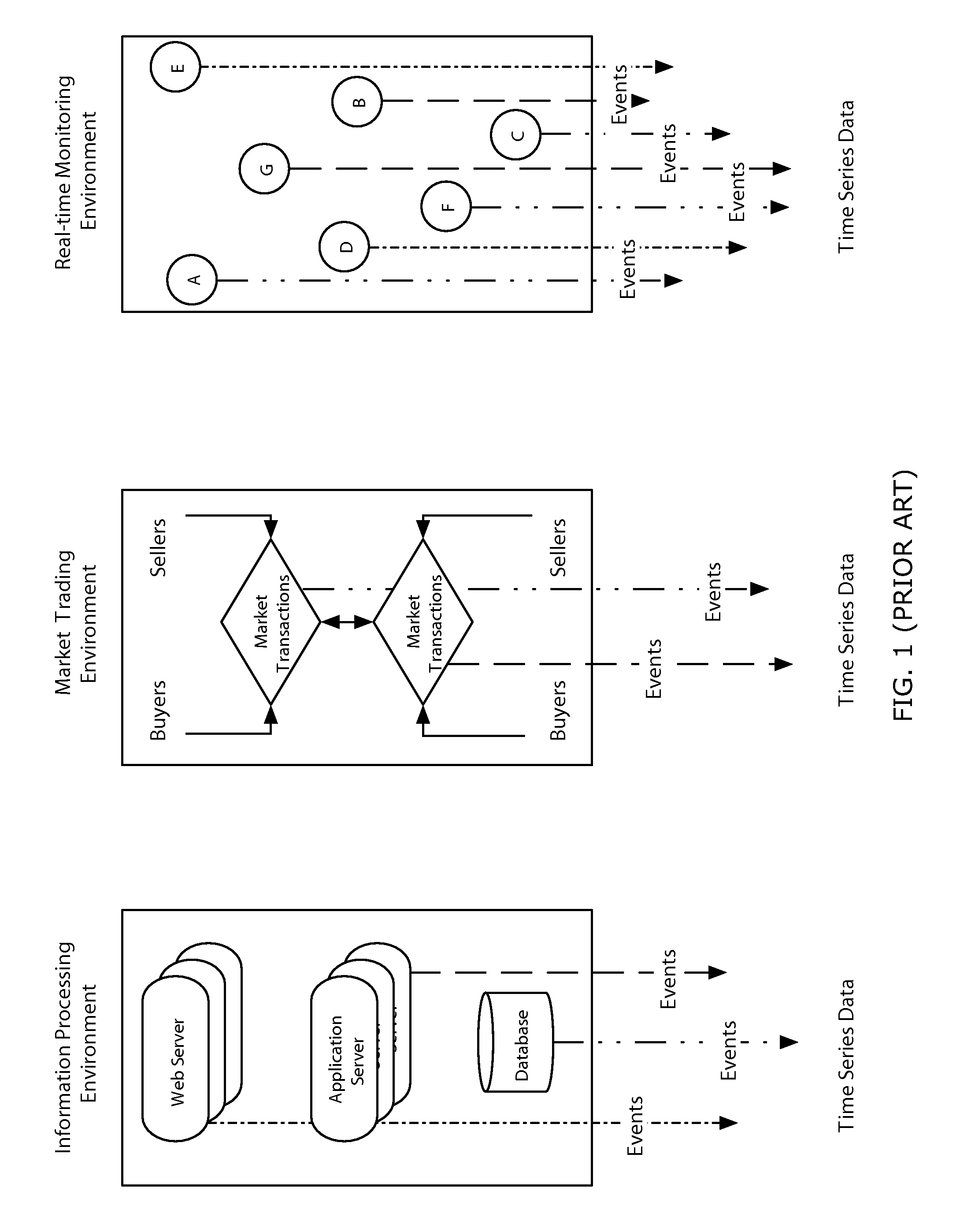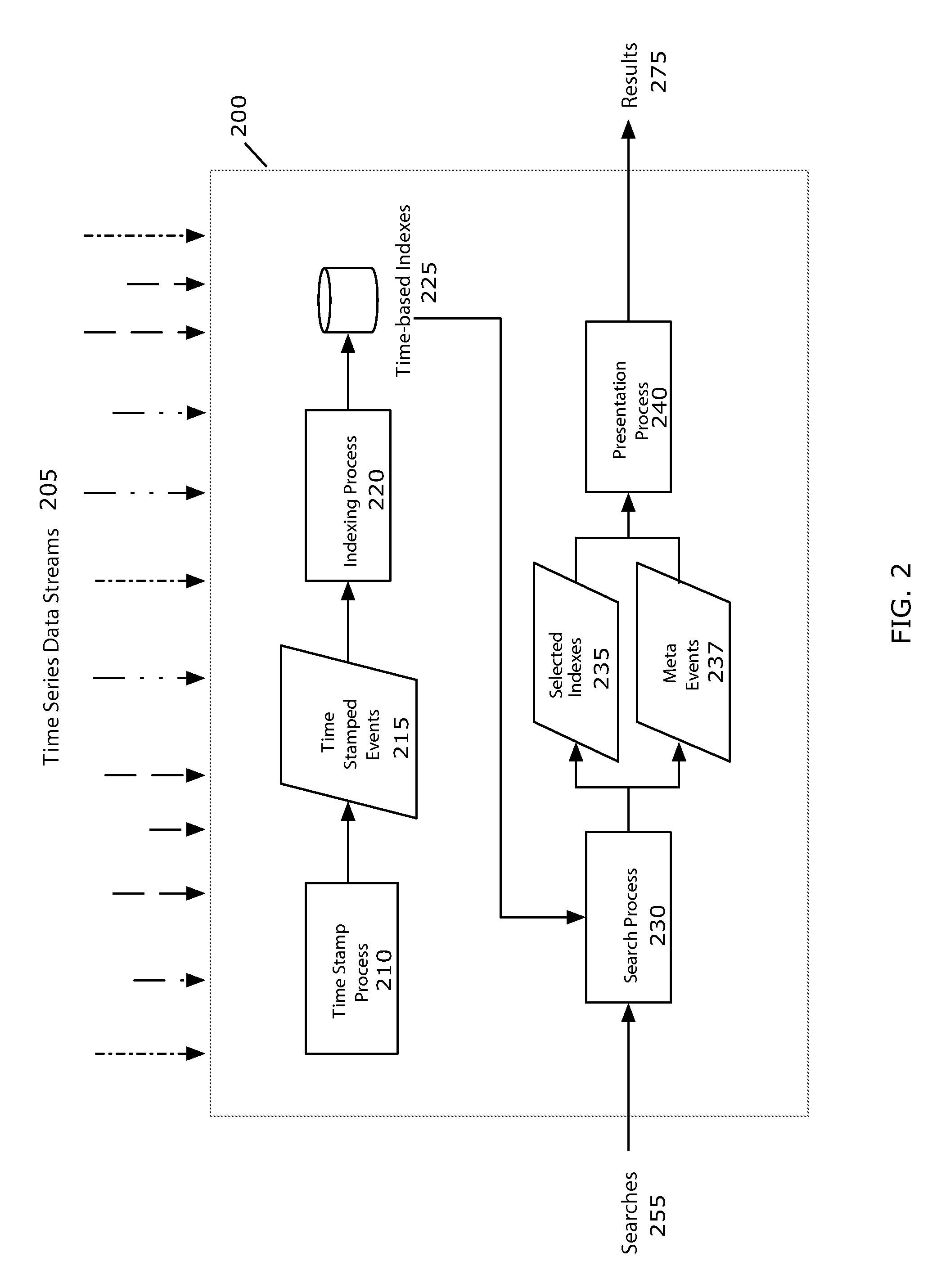Time series search engine
a time series and search engine technology, applied in the field of information organization, search, and retrieval, can solve the problems of not meeting the needs of time series data, not having the notion of time-based indexing, searching or relevancy in the presentation, and not having the ability to index time series data, etc., to facilitate the execution of time series searches.
- Summary
- Abstract
- Description
- Claims
- Application Information
AI Technical Summary
Benefits of technology
Problems solved by technology
Method used
Image
Examples
Embodiment Construction
[0032]FIG. 1 illustrates different examples of time series data environments with potentially large numbers of data sources and streams of time series data across multiple domains. In this figure, the first picture represents an information-processing environment with time series data from web servers, application servers, and databases in the form of server logs. The second picture is a typical market-trading environment with transactions between multiple buyers and sellers and between two or more markets. Time series data is generated in the form of transaction records representing the intention or trade or the final settlement of the trade as examples. In the third picture, a real-time monitoring environment is depicted with multiple sensors producing time series data in the form of recorded measurements. All three of these environments are examples of potential applications for the TSSE.
[0033]Aspects of the invention will be described with respect to the first picture in FIG. 1,...
PUM
 Login to View More
Login to View More Abstract
Description
Claims
Application Information
 Login to View More
Login to View More - R&D
- Intellectual Property
- Life Sciences
- Materials
- Tech Scout
- Unparalleled Data Quality
- Higher Quality Content
- 60% Fewer Hallucinations
Browse by: Latest US Patents, China's latest patents, Technical Efficacy Thesaurus, Application Domain, Technology Topic, Popular Technical Reports.
© 2025 PatSnap. All rights reserved.Legal|Privacy policy|Modern Slavery Act Transparency Statement|Sitemap|About US| Contact US: help@patsnap.com



